Corn, soybean and wheat sales all gain ground from the prior week.

Export sales saw a round of positive results for the week ending September 13, with corn nearly doubling its totals from the prior week, while soybean sales made moderate progress and wheat sales inched forward.
Corn exports saw 54.5 million bushels in old crop sales plus another 400,000 bushels in new crop sales for a total of 54.9 million bushels. That total very nearly doubled the prior week’s totals of 27.6 million bushels and were well ahead of trade estimates of 33.5 million bushels. The rate needed to reach USDA forecasts lowered to 33.5 million bushels.
Corn export shipments of 42.4 million bushels last week were just below the weekly rate needed to match USDA forecasts, now at 44.1 million bushels. For the young 2018/19 marketing year, Mexico leads all destinations for U.S. corn export commitments, accounting for 30% of the total. Other top destinations include unknown destinations (18%), Japan (16%) and South Korea (9%).
Soybean exports found 33.7 million bushels in old crop sales and another 2.9 million bushels in new crop sales last week, for a total of 36.7 million bushels. That landed well ahead of the prior week’s total of 25.8 million bushels and trade estimates of 23.9 million bushels. The weekly rate needed to match USDA forecasts moved lower, to 27.2 million bushels.
But lack of participation from China are still being felt, notes Farm Futures senior grain market analyst Bryce Knorr.
“Chinese tariffs on imports of U.S. crops continue to impact export sales, as evidenced by this morning’s report,” he says. “Sorghum commitments so far are dismal because China stopped buy. Total soybean commitments to China are down 80% from year ago levels.”
Even so, inexpensive U.S. soybeans continue to attract attention from other buyers, Knorr adds.
Soybean export shipments of 29.2 million bushels last week were below the weekly rate needed to match USDA forecasts, now at 39.9 million bushels. The largest destination for U.S. soybean export commitments this marketing year is unknown destinations, accounting for nearly half (42%) of the total. Mexico (12%) is the second-leading destination for 2018/19 so far, with China accounting for just 8% of the total.
Wheat exports added another 17.2 million bushels in sales last week, which landed ahead of the prior weeks’ total of 15.2 million bushels and trade estimates of 13.8 million bushels. The weekly rate needed to match USDA forecasts inched slightly higher, to 17.5 million bushels.
Wheat export shipments last week totaled 11.7 million bushels, moving the weekly rate needed to reach USDA forecasts higher, to 22.0 million bushels. So far in the 2018/19 marketing year, the Philippines is the top destination for U.S. wheat export commitments, accounting for 16% of the total. Other top destinations include Mexico (12%), Japan (12%), South Korea (8%) and unknown destinations (6%).
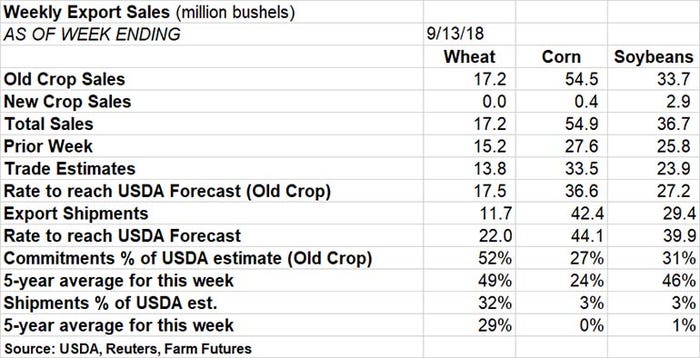

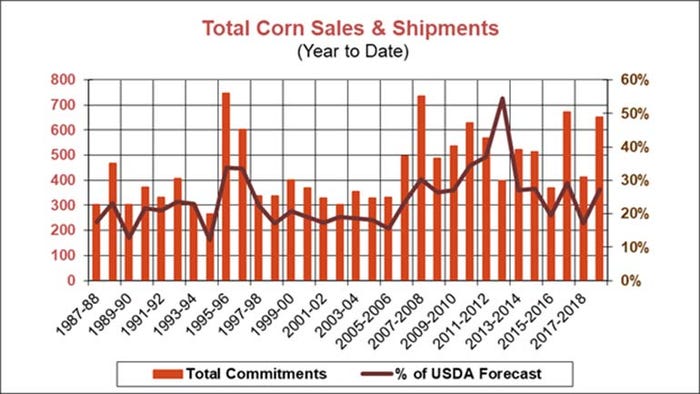
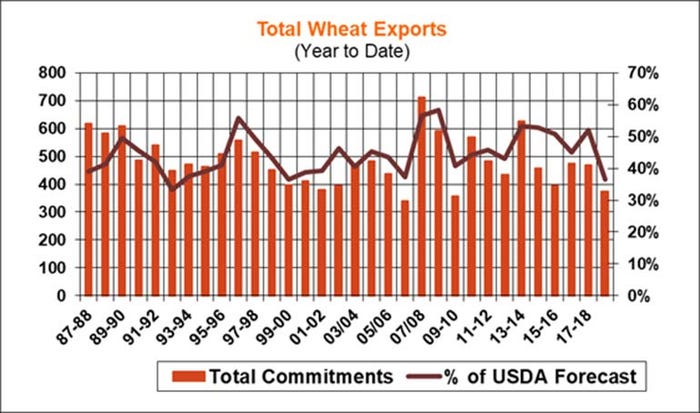
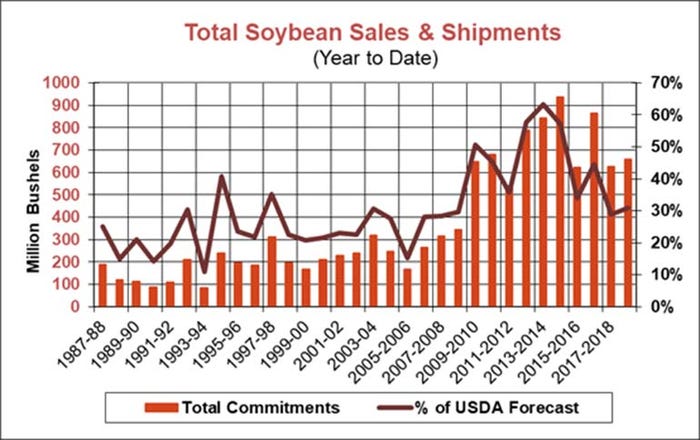

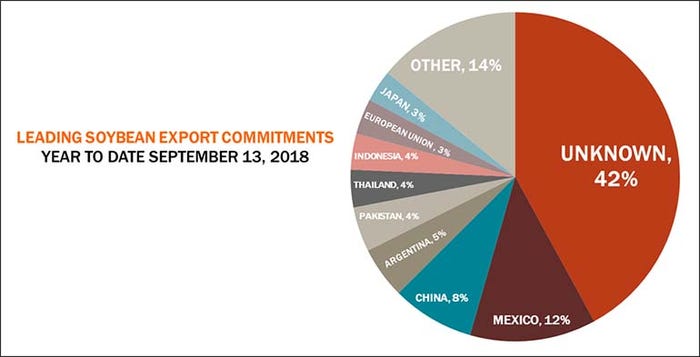
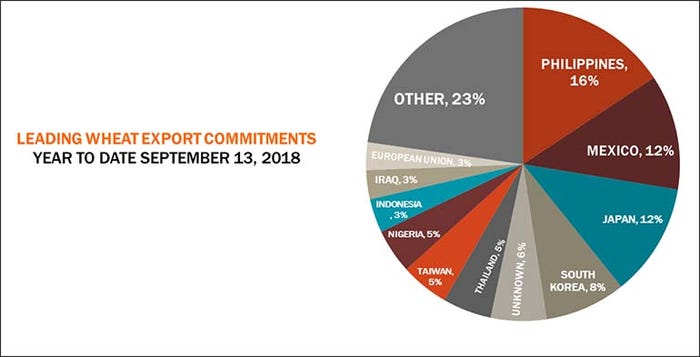
Click on the download button below for more charts and graphs.
About the Author(s)
You May Also Like





